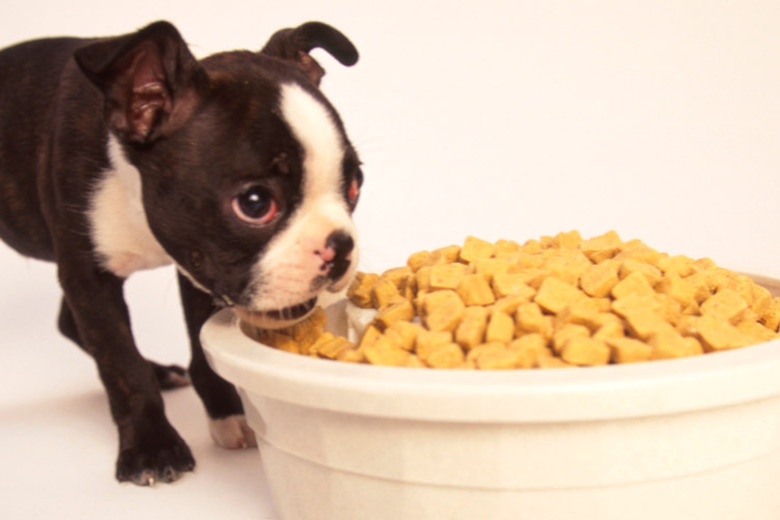When To Increase A Puppy's Food Intake
You want to get your new puppy off to a healthy start but it's been years since you had a little pup underfoot, and you have a lot questions about her nutritional needs. Does your furry friend need a specially formulated puppy food? How much should you feed her and how often? When should you increase the amount you feed? These are all common questions that new dog owners want answers for.
Early Nutrition
Your new puppy has lived exclusively on mother's milk for the first 4 weeks of her life. If you are the breeder or for some reason are responsible for transitioning the pup to solid dog food, you can begin introducing small amounts of a high-quality puppy food softened in water at 4 weeks. Gradually increase the amount of kibble until she is eating 100 percent dog food at 6 or 7 weeks.
According to ASPCA nutrition experts, puppies use about twice as much energy as adult dogs, depending on the breed. Therefore, they recommend a puppy food that contains 25 to 30 percent protein. A quality dog food brand will offer guidelines for how much to feed and how often, depending on age and size. Your veterinarian is also a good resource for helping to determine your puppy's dietary needs.
Growing Up
Most dog food manufacturers recommend dividing your youngster's daily food intake into four equal portions that you feed throughout the day. As your pup grows, cut down on the number of feedings, while increasing the amount of each serving. At what age you make those changes depends on several factors such as breed and activity level, but in general, your furry friend should be fed four times a day until she's about 4 months old and by 6 months you can cut back to two feedings and keep that regimen for the rest of her life. Some adult dogs can be fed free choice, which means you leave food out all the time, and your dog will nibble throughout the day. The free-choice method is not usually recommended for puppies as they tend to gobble up whatever you put in from of them and can easily become overweight.
Monitor
One of the best gauges for feeding the appropriate amount of food is your pup herself. If she is constantly hungry and not putting on weight, try increasing the amount. Also make sure to have your veterinarian check her for internal parasites as that can hinder weight gain. Healthy puppies will naturally put on weight during this growth stage, but if you notice excessive weight gain (you should be able to feel her ribs but not see them), you might need to cut back on her food or increase her level of exercise. Most veterinarians have a dog scale that you can drop in and use free of charge. This is a handy way to monitor your growing pup's nutritional needs.
Precautions
It's hard to resist those imploring brown eyes that follow you everywhere begging for a treat, but don't overdo it. Treats are fine for your furry friend once in a while, but dog treats and scraps should not make up more than 5 to 10 percent of your dog's diet.
Some owners of large-breed puppies try to induce a growth spurt by purposefully overfeeding their puppy. Never do this with your puppy as it can cause growth abnormalities, skeletal problems, and weight control problems later in life.
By Gayle Rodcay
References:
ASPCA: Feeding Your Puppy
Virginia-Maryland Regional College of Veterinary Medicine: Nutrition for the Growing Puppy
The Kennel Club: Feeding your puppy
About the Author
With a Bachelor of Arts in technical communications from Colorado State University, Gayle Rodcay has spent over 18 years editing and writing for various technical publications. In 2009, she launched a freelance writing career. Before embarking on her writing career, Rodcay was a certified veterinary technician and uses her animal and health knowledge in her freelance writing efforts.
